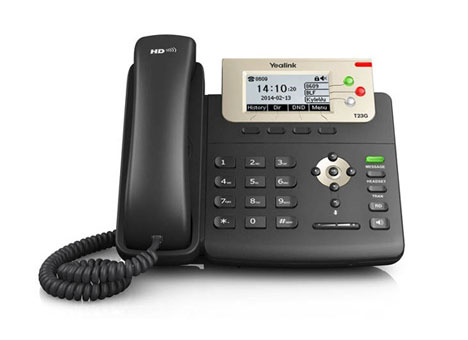
VoIP Phone FAQs
When looking to buy a VoIP phone, you may encounter some questions about different features and technologies, which can be a bit daunting. To help you make an informed decision, we have put together a few questions below.

Conference capability is also a big advantage of VoIP. Data is compressed by the system, meaning more calls can be handled on the access line. Communicate with your whole team at the same time without the hassle!
VoIP systems can be set up with relatively basic equipment. You only need an internet connection and a handset, both of which can be quite cheap. You can also download your software from the internet, for example, Skype can be downloaded and used with compatible VoIP phones.
Auto-attendant transfers callers to an extension without going through a receptionist, saving users time. Call forwarding can send phone calls through to other devices, such as your mobile, in case you are away from your desk phone. Finally, VoIP phones usually have lots of options to personalize them to your needs and preferences. Personalization helps you with the everyday use of your VoIP phone.
If you want more information about VoIP phone features and what to look for, fill out the form below to receive our FREE VoIP phone buying guide!
The number of line appearances you may need will vary from user to user, depending on your needs.
The bandwidth you will need depends on how many concurrent calls you hope to make. Your connection speed is measured in Kilobits per second (Kpbs) or Megabits per second (Mbps). The table below gives you an idea of what sort of bandwidth you will need.
|
Number of Concurrent Calls |
Minimum Bandwidth |
Recommended Speed |
|
1 |
100 Kbps Up and Down |
3 MBps Up and Down |
|
3 |
300 Kbps Up and Down |
3 MBps Up and Down |
|
5 |
500 Kbps Up and Down |
3 MBps Up and Down |
|
10 |
1 MBps Up and Down |
5-10 MBps Up and Down |
The bandwidth you will need depends on how many concurrent calls you hope to make. Your connection speed is measured in Kilobits per second (Kpbs) or Megabits per second (Mbps). The table below gives you an idea of what sort of bandwidth you will need.
Download Onedirect VoIP Phone Buying Guide



